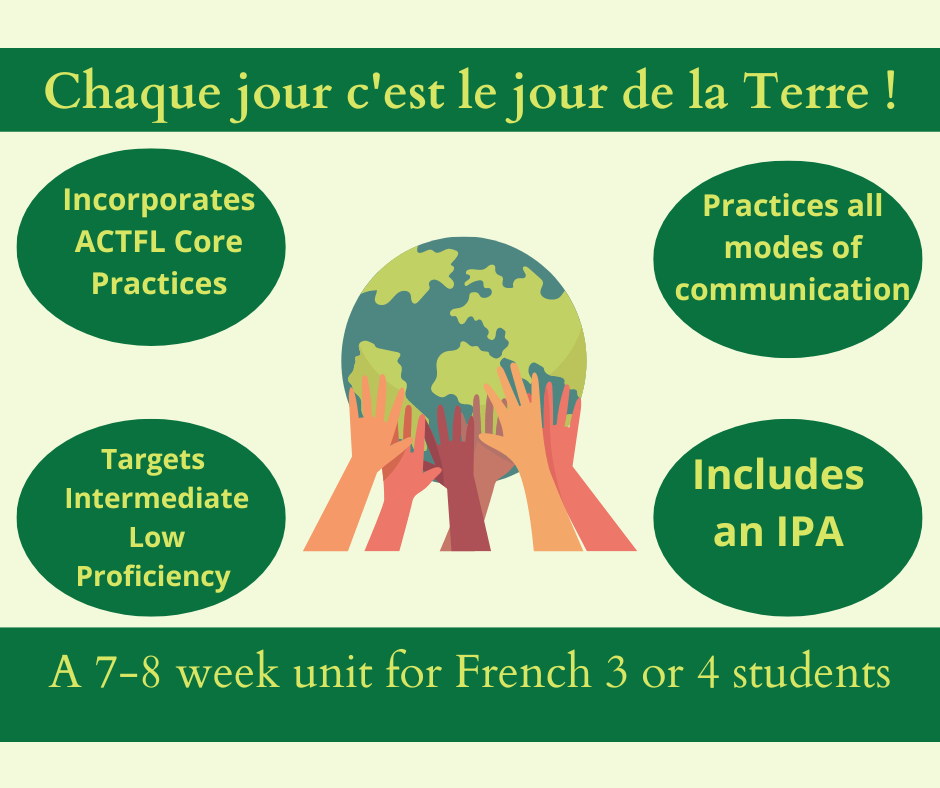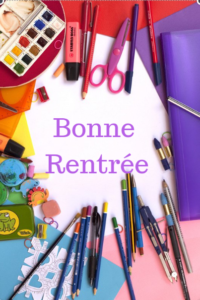One of the most rewarding aspects of being an ACTFL presenter is learning more about language learning as I research a new topic for each proposal. This past year I decided to focus on becoming more knowledgeable about the listening process, as I hadn’t seen many sessions on this topic in the past.
Did I ever have a lot to learn! Before I started exploring this topic, my approach to preparing a listening activity was to write questions, add them to Edpuzzle or print them out and then instruct my students to go listen and answer the questions.
There was so much more I could have done to support my students before turning them loose with those YouTube videos! Most importantly, I could have created pre-listening activities to activate my students’ prior knowledge. Doing so would have facilitated my students’ use of top-down processes to derive meaning from the texts they would be listening to. As Hawkins and Henshaw explain on p. 106 of Common ground second language acquisition theory goes to the classroom, in top-down processing,“we apply our background knowledge, perspectives, expectations, and experiences to anticipate, understand, and infer ideas.”
When we know better, we do better! Although I don’t currently work with students, I am able to use what I’ve learned about the role of pre-listening tasks in the resources that I create for other teachers. Here are some of my go-to pre-listening activities.
#1: Review key vocabulary. In addition to top-down processes, students engage bottom-up processing when listening as they identify known words to make meaning from what they hear. As a result, introducing or reviewing key words is an important pre-listening activity. One of my favorites is this Hexagonal Thinking Routine, in which students discuss relationships and manipulate words to create a web. Read more about this strategy here.

#2 Play the video without the sound. By first playing the video without sound, the teacher can activate students’ background knowledge by asking relevant questions about the images. This discussion also provides valuable language input to the students, introduces key vocabulary and develops their content knowledge.
Here’s a sample script for the video, C’est quoi la biodiversité.
(0:16) Qu’est-ce que tu vois ici ? Qu’est-ce que l’homme fait ? Qu’est-ce qu’il regarde ? Qu’est-ce qu’il entend ? Tu aimes faire des promenades dans la nature ? Pourquoi ou pourquoi pas?Où vas-tu pour profiter de la nature ? Comment est cet endroit ? Qu’est-ce que tu y vois ? Qu’est-ce que tu y entends ? Qu’est-ce que tu y sens ?
(0:24) Quels milieux naturels sont représentés dans cette image ? Quels êtres vivants habitent dans les lacs? Et dans la forêt ? Et dans les montagnes ? Tu as fait de la rando dans les montagnes ? Lesquelles ? C’était comment ? Qu’est-ce que tu y as vu ? Qu’est-ce que tu y as entendu ? Qu’est-ce que tu y as senti ? Pourquoi est-ce que les gens aiment les montagnes ?…
(0:31) Qu’est-ce que ces flèches représentent ? Quelle est la relation entre l’homme et l’abeille? Et l’abeille et la fleur ? Le champignon et l’homme ? L’arbre et l’homme ? L’arbre et l’oiseau ?
(0:44) Qu’est-ce qu’il y a dans cette image ? Comment est l’arbre ? Pourquoi l’homme a-t-il besoin du bois ? Pourquoi le bois est-il important pour les êtres humains ? Pourquoi est-ce qu’on détruit les forêts ? Quelles sont les conséquences d’un manque d’arbres pour la planète ?
(0:51) Qu’est-ce que tu vois dans cette image ? Qu’est-ce que l’abeille fait ? Qu’est-ce qui se passerait sans abeilles ? Les abeilles sont-elles menacées ? Pourquoi ?Qu’est-ce qu’on peut faire pour aider les abeilles ?
(1:03) Qu’est-ce que tu vois sur cette corde raide ? Pourquoi est-ce qu’on représente ces différentes espèces sur une corde raide ? (Qu’est-ce qui se passerait si une des espèces tombait de la corde ?)
(1:14) Quelles activités humaines sont représentées dans cette image ? Quels sont les dangers de la déforestation ? Et la pêche intensive ? Et la pollution ? Comment est-ce que tu contribues à ces dangers ?
(1:29) Quelles solutions sont illustrées dans cette image ? Tu achètes des aliments bio ? Lesquels ? Tu plantes les arbres ? Tu donnes de l’argent pour créer des aires protégées ?
#3 Assign true/false questions. Asking the students to answer true/false questions about the video before watching it encourages them to make predictions and provides a reason for listening.
Here are some sample questions for C’est quoi une espèce menacée ?
- Une espèce disparaît toutes les 13 minutes.
- Un mammifère sur dix pourrait s’éteindre dans un futur proche.
- La plupart des espèces disparaissent à cause de l’activité humaine.
- Les gaz à effet de serre font fondre l’habitat de l’ours polaire.
- La pollution de l’eau menace la survie du requin.
I would love to hear from you about your favorite pre-listening activities!
For a complete unit on the environment for French 3 and 4 students, click here.












